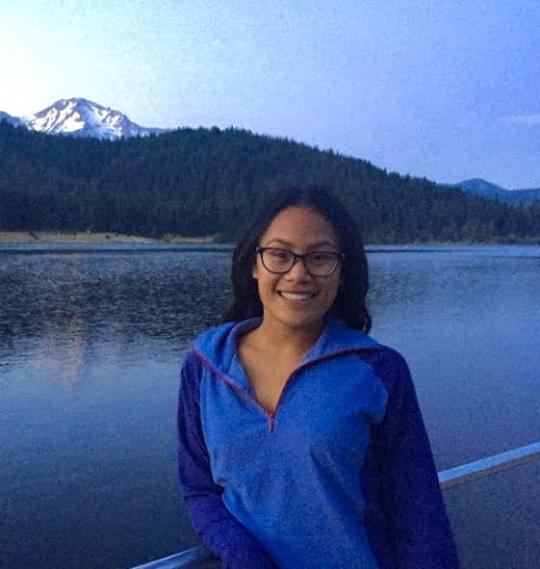Fighting for Climate Change to Protect Indigneous Land
“It is a constant reminder of how much we are losing,” said Chief Shirell Parfait-Dardar during the Critical Collaborations event.
This event had a strong turnout with over 60 participants, including students, Federated Indians of Graton Rancheria tribal member and SSU alumni Patricia Miraz, Associate Vice President for Strategic Initiatives and Diversity Dr. Jerlena Griffin-Desta, Academic Advisor and Native American Initiative Representative Amal Munayer, Native American Faculty Liaison Dr. Jeffery Reeder, and Dr. Sharon Miller among many others. For me, as a student majoring in Communications, the most interesting part of this event was the research done on the receding land in Southern Louisiana. This event, which was co-sponsored by the CCE, in partnership with the Department of Native American Studies (NAMS) and Dean Hollis Robins from the School of Arts and Humanities. The purpose of this event was to figure out how Non- Native American researchers can work with Native American communities to ask relevant science based questions, seeking impactful answers.
The three speakers’ first presentation, as part of Native American Heritage Month in November 2020, was so well received that they were invited back for this presentation on their process. The three returning speakers were Shirell Parfait-Dardar (Chief of the Grand Caillou/ Dulac Band of Biloxi-Chitimacha-Choctaw Indians), Dr. Ronádh Cox (from Williams College) and Devon Parfait, Future Chief of the Grand Caillou/ Dulac Band of Biloxi-Chitimacha-Choctaw Indians. The event was facilitated by Dr. Erica Tom, Director of NAMS at SSU.
The speakers gave in depth descriptions of the environmental injustice in Southern Louisiana, specifically the loss of land and culture of the Grand Caillou/Dulac band who live there. With climate change, water is rising at a very high rate and is causing the land in Southern Louisiana to recede rapidly. As a result of this, Dr. Cox states the Grand Caillou/ Dulac Band tribe members “are losing their homelands and heritage” in Southern Louisiana and “the change is happening very quickly.” Science is a critical part of figuring out ways to prevent land from receding even more. Chief Parfait-Dardar and Future Chief Devon Parfait are working with Dr. Cox to use science to figure out how to give its people a better life so they don’t lose what they’ve created and built over centuries.
The science used to monitor land change is GIS (geographic information system). GIS is a data mapping tool and is a great way for the tribe to look at land coverage change over time. Future Chief Parfait explained that with access to satellite imagery tools composed of multiple bands, the tribe is able to see the land loss changes through different perspectives or “layers.” He also mentioned that “Louisiana is a pretty difficult place to tell what exactly is the difference between land and water,” since “Louisiana is a really marshy and muddy place, it’s hard to tell what is muddy water or watery mud.” This study allows the tribe to calculate the change of water over time.
In a very poignant statement, Chief Parfait-Dardar mentions that her tribe is,
”dealing with lack of education opportunities… it’s absolutely crucial that our people be able to get an education and be able to learn all of these different things… pursuing different avenues to be able to get those funding resources to be able to get our students into the classrooms, which is why young Chief Devon is over at Williams College because it’s crucial for him to have the tools necessary for him to lead his people and if that meant that we had to send him halfway across the United States away from his homeland to do that, then that’s what we need to do.”
With fishing, shrimping and oyster harvesting being the tribes’ traditional way of life, getting an education wasn’t necessary or even allowed past the 8th grade back in the days of segregation. However, as the land and waters that are the basis of the tribes’ traditions and culture are being threatened, so is their way of life, ability to survive and participate in today’s society. This puts the tribe at a huge disadvantage.
At the end of the presentation, students and faculty were encouraged to ask any questions regarding the presentation. Student Lucas Mateo Bernal asked “is there a way that we can follow the progress of your research? And any way we can contribute as well?” Future Chief Parfait responded that he may begin a blog folks could follow that would provide updates on the research and ways to get involved. Chief Parfait-Dardar said they “are always open to working with university students because it’s a win-win. We teach them the way to interact with Indigenous communities. We bring them into our culture” while also “helping them develop a whole new understanding of what it is to interact with different indigneous groups in their own homelands.”
To learn more about how to get involved click here. Students who are interested in learning about and working with local tribes should contact NAMS.

Author: Kiera Moran



